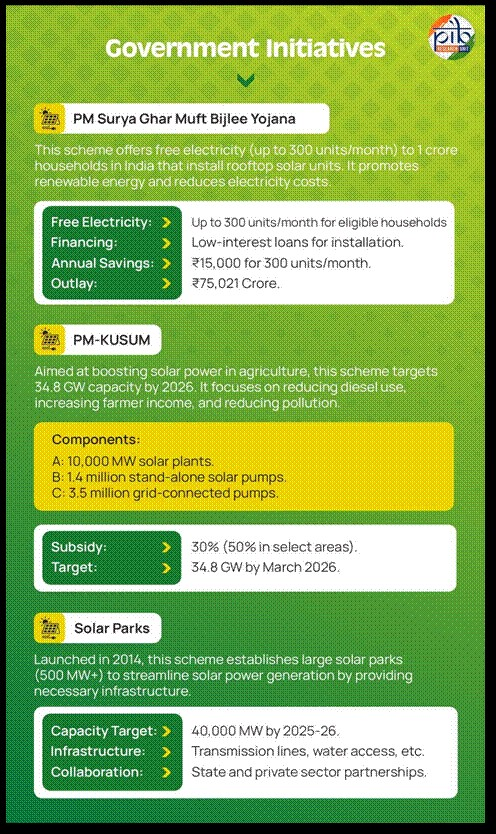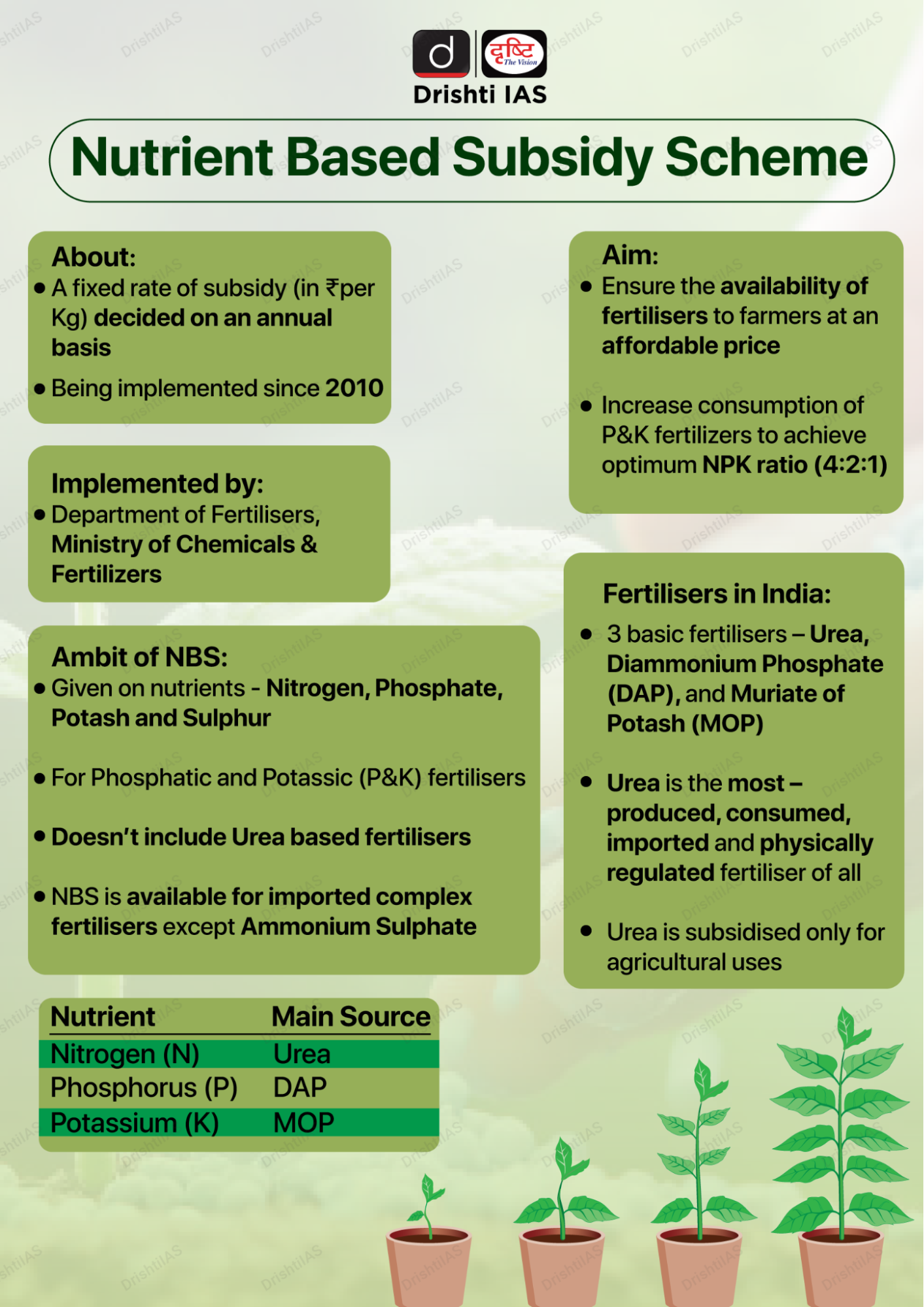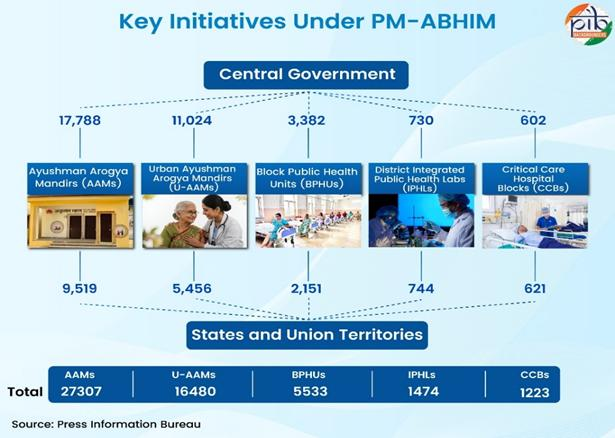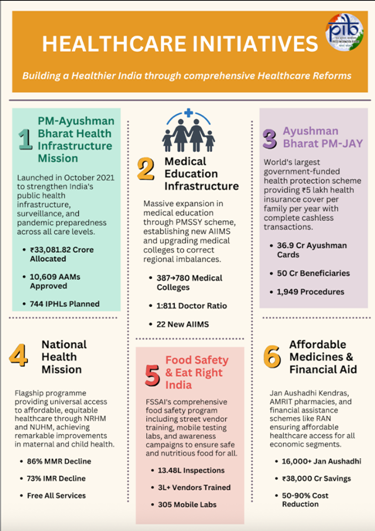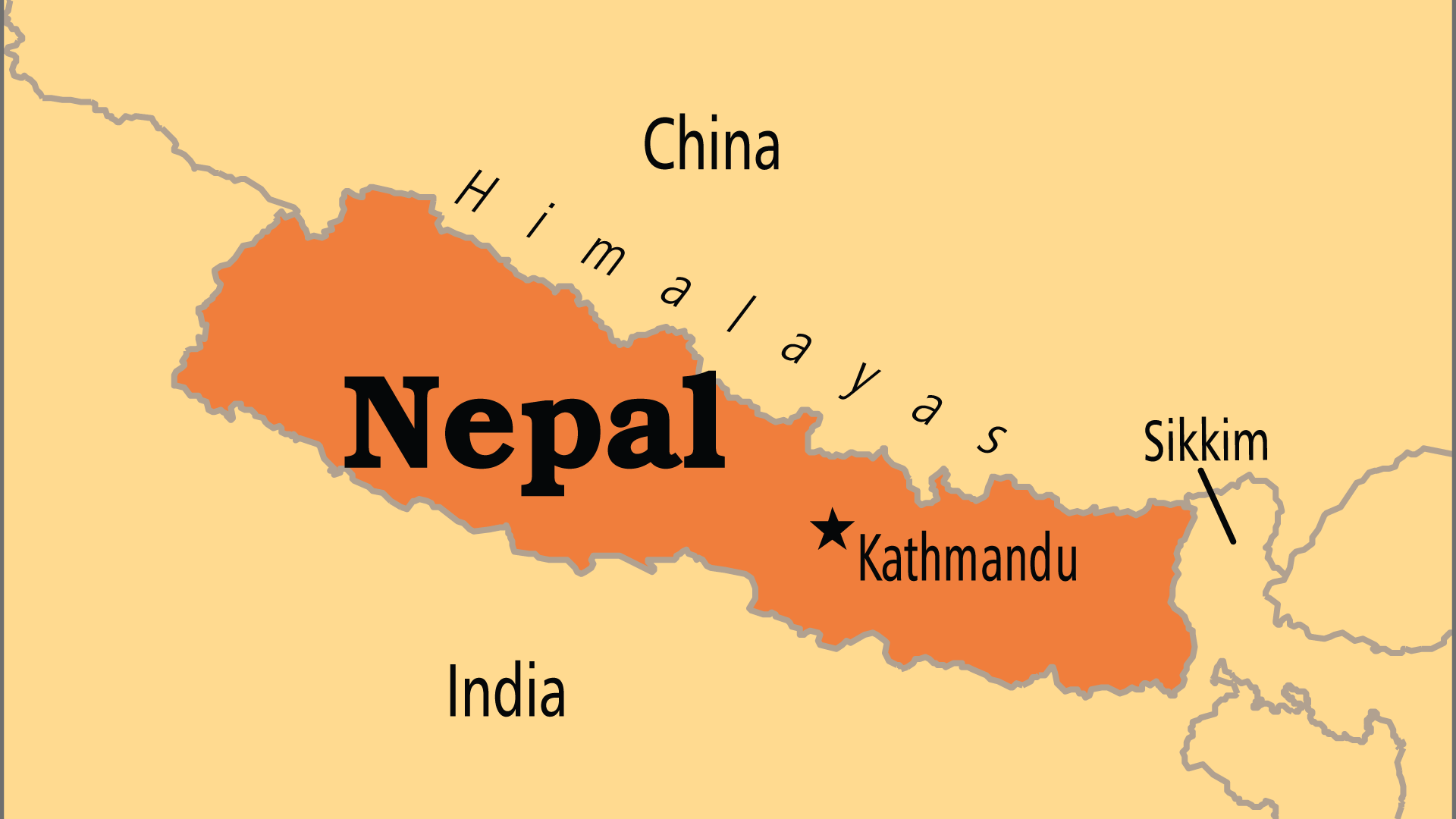Economy
8th Session of the International Solar Alliance(ISA)
For Prelims: International Solar Alliance , Small Island Developing States, Building-Integrated Photovoltaics, PM Surya Ghar Muft Bijli Yojana
For Mains: India’s renewable energy transition, Role of the International Solar Alliance in promoting South–South cooperation for energy transition.
Why in News?
President Droupadi Murmu addressed the 8th Session of the International Solar Alliance (ISA) Assembly in New Delhi, urging the Global South to lead an inclusive solar revolution and reaffirming India’s commitment to a solar-powered world.
What are the Key Highlights of the 8th Session of the International Solar Alliance (ISA) Assembly?
- SUNRISE Network: ISA launched the SUNRISE (Solar Upcycling Network for Recycling, Innovation & Stakeholder Engagement) initiative to promote a circular economy in the solar sector.
- It focuses on recycling, innovation, and creating green jobs through sustainable solar waste management.
- One Sun One World One Grid (OSOWOG): A dedicated OSOWOG programme was introduced to build regional solar interconnections across continents.
- The plan identifies key transmission links between Asia, the Middle East, Europe, and Africa, with feasibility studies to be conducted in the next 2–3 years.
- SIDS Solar Procurement Platform: Sixteen Small Island Developing States (SIDS) signed an MoU with ISA and the World Bank to collaborate on joint solar procurement, digital integration, and capacity building for stronger energy resilience.
- Global Capability Centre and ISA Academy: ISA announced the Global Capability Centre in India as a “Silicon Valley for Solar,” connecting global centres of excellence.
- The ISA Academy, an AI-based e-learning platform, will offer training and resources to strengthen global solar skills and knowledge.
ISA Reports on Global Solar Trends
- The Assembly launched Five ISA Reports: Ease of Doing Solar 2025, Solar PV Skills and Jobs in Africa, Solar Compass, Global Floating Solar Framework, and Global Solar Trends & Outlook 2025, highlighting key global solar trends.
- Ease of Doing Solar 2025: Global energy transition investments in 2024 reached USD 2,083 billion. ISA Member Countries contributed USD 861.2 billion, showing the Global South’s growing leadership.
- Solar power drew USD 521 billion, making it the leading force in renewable investments.
- Global Solar Trends & Outlook 2025: Confirms that solar is now the dominant force driving clean energy growth worldwide.
- Solar Compass: Integrated PV Applications: Highlights opportunities in Building-Integrated Photovoltaics (BIPV), as 70% of future buildings in developing countries are yet to be built.
- ISA aims to lower BIPV costs to rooftop solar levels and promote solar-ready housing policies across the Global South.
What is the International Solar Alliance (ISA)?
- Origin and Membership: The ISA was launched in 2015 by India and France during the UN Climate Change Conference (COP21) in Paris. It is the first international intergovernmental organisation headquartered in India.
- It currently has 125 Member and Signatory Countries, working together to expand access to clean, affordable, and reliable solar energy worldwide.
- Core Mission: ISA aims to enhance global energy access and security by promoting solar power as a key driver of the world’s transition to a sustainable energy future.
- Strategic Pillars:
- Catalytic Finance Hub: It aims to mobilise USD 1 trillion in investments by 2030.
- Global Capability Centre & Digitisation: Promotes innovation, capacity building, and digital platforms across Member Countries.
- Regional & Country-Level Engagement: Drives tailored interventions through partnerships and local cooperation.
- Technology Roadmap & Policy: Supports deployment of emerging solar technologies through practical policies and knowledge resources.
- Significance: ISA seeks to transform lives by bringing clean, reliable, and affordable energy to communities, promoting sustainable growth and improving quality of life globally.
How is India Leading the Solar Energy Transition?
- Record Renewable Energy Achievements: As per IRENA Renewable Energy Statistics 2025, India ranks 4th globally in Renewable Energy Installed Capacity, 4th in Wind Power, and 3rd in Solar Power capacity.
- Solar capacity has increased more than 39 times, from 2.82 GW in 2014 to 110.9 GW in 2025, including a record 23.83 GW added in 2024–25 alone.
- India achieved 50% of its installed capacity from non-fossil sources five years ahead of its 2030 target, reflecting strong policy and institutional commitment.
- Manufacturing Boost (2014 to March 2025): Solar PV module capacity surged from 2.3 GW to 88 GW, a 38-fold increase.
- Solar PV cell capacity grew from 1.2 GW to 25 GW, a 21-fold increase.
- Flagship Initiatives:
- National Solar Mission : Part of the National Action Plan on Climate Change, it aims to establish India as a global leader in solar energy.
- PM-Surya Ghar Muft Bijli Yojana: Promotes rooftop solar adoption for households.
- PM-KUSUM Scheme: Supports farmers in installing solar pumps and grid-connected systems.
- Solar Parks Scheme: Enables large-scale solar project development across states.
- Production Linked incentive (PLI) for Solar Manufacturing: Boosts domestic production of high-efficiency solar modules.
- India’s initiatives like PM Surya Ghar Muft Bijli Yojana and PM-KUSUM are now being replicated across Africa and SIDS through ISA partnerships.
- Sustainable and People-Centric Approach: India’s renewable journey balances growth with ecological preservation, focusing on technology sharing and inclusive development.
- Progress is measured not just in megawatts, but in lives improved and communities empowered.
What are the Challenges and Opportunities for India’s Solar Energy Development?
|
Aspect |
Challenges |
Opportunities |
|
Import Dependence |
India relies on China for over 50% of its solar cells and modules, and its high dependence on critical minerals creates supply chain and energy security risks. |
Boost local manufacturing through the PLI scheme and mineral recycling to cut import dependence. |
|
Employment |
Job creation limited by import-heavy value chains. |
Scaling domestic production can expand green employment. |
|
Land Use Conflicts |
Solar projects require vast tracts of land, often competing with agriculture and biodiversity. |
Promote agrivoltaics (dual land use) and floating solar projects like Omkareshwar (600 MW) to minimise trade-offs. |
|
Grid and Storage Deficits |
Transmission losses and costly storage systems hinder solar integration. |
Invest in smart grids, National Logistics Policy, and hybrid (solar-hydro-battery) models for stability. |
|
Manufacturing Gaps |
Weak R&D and lack of infrastructure for upstream components (polysilicon, wafers). |
Develop full solar manufacturing ecosystem and incentivise research in perovskite & next-gen PV tech. |
|
Solar Waste Management |
Lack of recycling norms poses future environmental hazards. |
Implement solar recycling guidelines and develop circular economy models (e.g., SUNRISE network). |
|
Energy Demand Growth |
Energy demand is projected to reach 73 exajoules by 2050, increasing fossil dependence if unmet. |
Scaling solar under schemes like PM-KUSUM, Solar Parks, and ISA cooperation can meet rising demand sustainably. |
Conclusion
Guided by the founding vision of “One World, One Sun, One Grid,” India reaffirmed its commitment to ISA’s leadership in advancing global solar cooperation, sustainable innovation, and inclusive energy access.
|
Drishti Mains Question: Q. Critically examine the role of the International Solar Alliance in promoting South–South cooperation for energy transition. |
Frequently Asked Questions (FAQs)
1. What is the International Solar Alliance (ISA)?
ISA is a global alliance launched by India and France in 2015 to promote solar energy adoption; it has 125 member and signatory countries and is headquartered in India.
2. What is SUNRISE and why is it important?
SUNRISE (Solar Upcycling Network for Recycling, Innovation & Stakeholder Engagement) is an ISA initiative to develop solar recycling and circularity, reduce end-of-life waste and generate green jobs across the solar value chain.
3. What does One Sun One World One Grid (OSOWOG) aim to achieve?
OSOWOG seeks regional solar interconnections across Asia, Middle East, Europe and Africa to enable cross-border clean power exchange and enhance energy security.
4. Which flagship Indian schemes are being shared internationally via ISA?
India’s people-centric programmes PM-Surya Ghar (rooftop solar) and PM-KUSUM (solarisation of pumps and decentralised systems) are being promoted as replicable models for Africa and Small Island Developing States (SIDS).
UPSC Civil Services Examination, Previous Year Questions (PYQs)
Prelims
Q. Consider the following statements: (2016)
- The International Solar Alliance was launched at the United Nations Climate Change Conference in 2015.
- The Alliance includes all the member countries of the United Nations.
Which of the statements given above is/are correct?
(a) 1 only
(b) 2 only
(c) Both 1 and 2
(d) Neither 1 nor 2
Ans: (a)
Mains
Q. India has immense potential for solar energy though there are regional variations in its developments. Elaborate. (2020)
Facts for UPSC Mains
Nutrient Based Subsidy(NBS) Scheme
Why in News?
The Union Cabinet, chaired by Prime Minister Narendra Modi, has approved the Nutrient Based Subsidy (NBS) rates for Phosphatic and Potassic (P&K) fertilizers for the Rabi season 2025–26 (from October 1, 2025 to March 31, 2026).
- The move aims to ensure affordable fertilizer availability for farmers while reflecting the latest global price trends of fertilizer inputs.
What is the Nutrient Based Subsidy (NBS) Scheme?
- About: The Nutrient Based Subsidy (NBS) Scheme, is a central sector scheme launched in 2010 by the Department of Fertilizers, Ministry of Chemicals and Fertilizers.
- It aims to make Phosphatic and Potassic (P&K) fertilizers available to farmers at affordable prices while promoting balanced nutrient application for sustainable agriculture.
- Key Features of NBS Scheme:
- Coverage: 28 grades of P&K fertilizers, including Di-Ammonium Phosphate (DAP) and NPKS grades.
- Subsidy Based on Nutrient Content: Provides a fixed amount of subsidy per kilogram of nutrient (Nitrogen (N), Phosphorus (P), Potash (K), and Sulphur (S)) is decided on an annual or bi-annual basis.
- The subsidy is provided to the manufacturers/importers based on nutrient content in each fertilizer.
- Special support: Government may provide additional subsidy (e.g., for DAP) to stabilize prices during global volatility.
- Decontrol of P&K Sector: P&K fertilizers are decontrolled under NBS. Fertilizer companies can fix the Maximum Retail Price (MRP) at reasonable levels, which are monitored by the Government to ensure affordability.
- Urea exclusion: Urea is not covered under NBS; its MRP is fixed at Rs 242 per 45-kg bag since 2018.
- Significance of the Scheme: Ensures continuous supply of essential fertilizers at affordable prices.
- Promotes nutrient balance and reduces overuse of nitrogen-based fertilizers.
- Enhances transparency and fiscal discipline in subsidy management.
- Supports soil health management and sustainable agricultural practices.
What are the Challenges with Nutrient Based Subsidy (NBS)?
- Imbalanced Fertilizer Use: Urea’s exclusion from NBS and its low fixed price have led to overuse of nitrogen and underuse of P&K nutrients.
- Long-term soil degradation threatens agricultural sustainability and food security.
- Rising fertilizer prices: Rising prices of non-urea fertilizers have increased farmers’ input costs despite subsidies. Price volatility discourages balanced fertilizer use and affects crop profitability.
- Fiscal strain: Fertilizer subsidy is India’s second-largest after food, adding significantly to the fiscal deficit. Increasing global prices further strain the subsidy budget and limit funds for other rural schemes.
- Import Dependence and Vulnerability: India's high import dependence (25% for urea, 90% for phosphates, and 100% for potash) exposes it to global price shocks.
- Any disruption in global supply chains directly impacts fertilizer availability and affordability.
- Environmental Impact: Overuse of nitrogen-rich fertilizers contributes to groundwater pollution and greenhouse gas emissions. Declining soil organic content affects long-term soil resilience and ecological balance.
What Reforms Needed to Strengthen India’s Nutrient Based Subsidy (NBS) Scheme?
- Bring Urea under the NBS framework: As recommended by the Commission for Agricultural Costs and Prices (CACP) include urea in the NBS to ensure uniform subsidy treatment for all major nutrients. This will promote balanced fertilizer use and reduce the overdependence on nitrogen.
- Link subsidies to Soil Health: Align fertilizer subsidies with Soil Health Card data to encourage region-specific nutrient application. Promote customized fertilizer blends suited to local agro-climatic conditions.
- Cap Excessive Subsidy Usage: Introduce a limit on the number of subsidized fertilizer bags per farmer to prevent diversion and misuse.
- Target subsidies better using Aadhaar-linked and Direct Benefit Transfer (DBT) systems.
- Encourage Organic and Bio-fertilizers: Provide financial incentives for using organic, bio, and nano fertilizers alongside chemical ones. This can improve soil health and reduce chemical dependency.
- Promote awareness and training: Educate farmers on balanced fertilizer use and sustainable nutrient management through Krishi Vigyan Kendras (KVKs) and extension services.
Conclusion
The NBS scheme marks a key shift toward balanced and sustainable fertilizer use. To realize its full potential, India must rationalize subsidies, and promote integrated nutrient management. Strengthening reforms can make India’s fertilizer policy more sustainable and farmer-centric.
|
Drishti Mains Question: Q. Examine the objectives and limitations of the Nutrient Based Subsidy (NBS) Scheme. How can policy reforms reconcile farmer welfare with fiscal sustainability? |
Frequently Asked Questions
1. What is the Nutrient Based Subsidy (NBS) Scheme?
The Nutrient Based Subsidy (NBS) Scheme, launched on 1 April 2010, provides a fixed subsidy (₹/kg) on nutrients N, P, K and S for 28 grades of P&K fertilisers, paid to manufacturers/importers to keep retail prices affordable.
2. How does excluding urea from NBS affect fertiliser use?
Urea’s separate price control (fixed MRP) encourages nitrogen over-application, causing nutrient imbalance, soil degradation, and underuse of phosphatic and potassic fertilisers
3. What are the main fiscal and supply risks in current fertiliser policy?
Fertiliser subsidy is India’s second-largest subsidy, creating fiscal pressure; high import dependence for P&K exposes India to global price shocks and supply disruptions.
UPSC Civil Services Examination, Previous Year’s Question (PYQs)
Prelims
Q. With reference to chemical fertilizers in India, consider the following statements: (2020)
- At present, the retail price of chemical fertilizers is market-driven and not administered by the Government.
- Ammonia, which is an input of urea, is produced from natural gas.
- Sulphur, which is a raw material for phosphoric acid fertilizer, is a by-product of oil refineries.
Which of the statements given above is/are correct?
(a) 1 only
(b) 2 and 3 only
(c) 2 only
(d) 1, 2 and 3
Ans: (b)
Q. Why does the Government of India promote the use of ‘Neem-coated Urea’ in agriculture? (2016)
(a) Release of Neem oil in the soil increases nitrogen fixation by the soil microorganisms.
(b) Neem coating slows down the rate of dissolution of urea in the soil.
(c) Nitrous oxide, which is a greenhouse gas, is not at all released into atmosphere by crop fields.
(d) It is a combination of a weedicide and a fertilizer for particular crops.
Ans: (b)
Mains
Q. How do subsidies affect the cropping pattern, crop diversity and the economy of farmers? What is the significance of crop insurance, minimum support price and food processing for small and marginal farmers? (2017)
Q. In what way could replacement of price subsidy with direct benefit Transfer (DBT) change the scenario of subsidies in India? Discuss. (2015)
Q. What are the different types of agriculture subsidies given to farmers at the national and at state levels? Critically, analyse the agricultural subsidy regime with reference to the distortions created by it. (2013)


Facts for UPSC Mains
RBI Gold Reserves Surpass USD 100 Billion
Why in News?
The Reserve Bank of India (RBI) has stepped up its gold repatriation efforts, bringing back nearly 64 tonnes of gold from abroad between April and September 2025, raising India’s gold reserves to USD 108 billion.
- Over the past decade, India saw its gold share in foreign exchange reserves almost double from less than 7% to nearly 15%.
- As of September 2025, the RBI held 880.8 tonnes of gold — 575.8 tonnes in India, 290.3 tonnes abroad (Bank of England & Bank for International Settlements), and 14 tonnes as deposits.
What are the Key Reasons Behind the RBI's Increase in Its Gold Reserves?
- Diversification of Forex Reserves: India’s forex reserves are mainly in US dollars, euros, and other currencies. Increasing gold holdings diversifies risks, protecting reserves from currency volatility.
- Hedge Against Global Uncertainty: During global crises like wars, inflation spikes, or financial instability, gold acts as a safe-haven asset.
- Rising geopolitical tensions and market uncertainty drive the RBI to boost gold holdings as a safety buffer.
- Strong Returns: Gold prices show long-term appreciation, often outperforming currencies in uncertainty. The RBI’s increased gold holdings ensure asset gains and reserve security.
- De-dollarization Trend: Many central banks like China, Russia, Turkey, and Poland are buying gold to cut US dollar dependence.
- The RBI’s gold purchases align with this de-dollarization trend, boosting monetary autonomy.
- Domestic Factors and Management: Part of the RBI’s gold accumulation comes from domestic banks that import gold, adding to reserves without using foreign currency.
- This marks a return to prudent reserve management, reflecting lessons from the 1991 crisis and 2008 Global Financial Crisis.
India's Foreign Exchange Reserve
- Foreign Currency Assets (FCA) are held in currencies such as the US dollar, euro, pound sterling, and Japanese yen.
- The reserves of gold maintained by the Reserve Bank of India.
- The Reserve Bank’s financial holdings with the International Monetary Fund.
- Special Drawing Rights (SDR), a reserve asset created by the IMF to enhance the reserve assets of its member countries, earning interest.
- Reserve Tranche Position (RTP): The difference between a member's IMF quota and the IMF's holdings of the member’s currency, which can be withdrawn without stringent conditions.
- Total Reserves: India's foreign exchange reserves stand at USD 702.28 billion as of October 2025.
- Composition of Reserves:
- Foreign Currency Assets (FCA): USD 570.411 billion.
- Gold Reserves: USD 108.546 billion
- Special Drawing Rights (SDRs): USD 18.722 billion.
- Reserve Position with IMF: USD 4.602 billion
Why does the RBI Store Part of India's Gold Reserves Abroad?
- Geopolitical Risk Mitigation: RBI diversifies gold storage across London, New York, and Zurich to avoid over-concentration and ensure access during disruptions.
- International Liquidity: Gold in global hubs enables quick conversion to cash and access to international markets when needed.
- Economic Resilience: Overseas gold reserves can be pledged or swapped with global institutions like the IMF or BIS to quickly raise foreign currency and help India meet financial obligations during crises.
- Trusted Custodians: The Bank of England and BIS provide secure, reliable frameworks for gold storage.
- Advanced Security: Vaults in London, Switzerland, and New York feature reinforced structures, biometric access, and 24/7 monitoring for maximum protection.
Conclusion
RBI's accelerated gold repatriation is a strategic move to de-risk India's sovereign assets from geopolitical financial warfare, enhancing economic sovereignty and financial security in a fragmented world.
|
Drishti Mains Question: Q. Analyse the strategic rationale behind the RBI’s gold repatriation drive since 2023 and its implications for India’s financial sovereignty |
Frequently Asked Questions (FAQs)
1. How much gold does the RBI hold domestically and overseas (Sept 2025)?
Total 880.8 tonnes: 575.8 tonnes domestic, 290.3 tonnes with Bank of England/BIS, plus 14 tonnes as deposits.
2. What proportion of India’s reserves is constituted by gold?
Gold accounts for 13.9% of India’s foreign reserves (Sept 2025), increasing strategic reserve diversification.
3. How does gold repatriation affect India’s import cover and resilience?
Repatriation improves reserve adequacy and import cover (now ~11 months), strengthening ability to meet external obligations
UPSC Civil Services Examination, Previous Year Questions (PYQs)
Prelims
Q.What is/are the purpose/purposes of Government’s ‘Sovereign Gold Bond Scheme’ and ‘Gold Monetization Scheme’? (2016)
- To bring the idle gold lying with Indian households into the economy.
- To promote FDI in the gold and jewellery sector.
- To reduce India’s dependence on gold imports.
Select the correct answer using the code given below:
(a) 1 only
(b) 2 and 3 only
(c) 1 and 3 only
(d) 1, 2 and 3
Ans: (c)
Q.Which one of the following groups of items is included in India’s foreign-exchange reserves? (2013)
(a) Foreign-currency assets, Special Drawing Rights (SDRs) and loans from foreign countries
(b) Foreign-currency assets, gold holdings of the RBI and SDRs
(c) Foreign-currency assets, loans from the World Bank and SDRs
(d) Foreign-currency assets, gold holdings of the RBI and loans from the World Bank
Ans: (b)
Mains
Q. Craze for gold in Indians has led to surge in import of gold in recent years and put pressure on balance of payments and external value of rupee. In view of this, examine the merits of Gold Monetization scheme. (2015)


Important Facts For Prelims
PM-Ayushman Bharat Health Infrastructure Mission (PM-ABHIM)
Why in News?
The Pradhan Mantri Ayushman Bharat Health Infrastructure Mission ) was launched in October 2021 to address the gaps in India’s healthcare system exposed by the COVID-19 pandemic and to enhance preparedness for future health crises.
- The mission advances universal health coverage goals and aligns with SDG-3 targets.
What is PM-ABHIM?
- About: The PM-ABHIM is one of the largest nationwide health initiatives, aims to build a resilient, accessible, and self-reliant public health system capable of responding effectively to current and future health emergencies.
- Aim & Implementation: It aims to bridge the service delivery gaps between urban and rural areas.
- It operates under a Centrally Sponsored Scheme (CSS) component, and focuses on strengthening health infrastructure at all levels- from primary and secondary to tertiary - during FY 2021–22 to FY 2025–26.
- One Health Approach: It emphasises disease surveillance, research, and the adoption of the One Health approach, which recognises the interconnection between human, animal, and environmental health.
- Major Components of PM-ABHIM:
- Ayushman Arogya Mandirs (AAMs): upgrading Sub-Health and Primary Health Centres into rural (R-AAMs) and urban (U-AAMs) units for comprehensive care.
- Block Public Health Units (BPHUs): strengthen local health administration and services.
- Integrated Public Health Laboratories (IPHLs): district-level labs for advanced diagnostics and disease tracking.
- Critical Care Hospital Blocks (CCBs): New tertiary-care units in high-population districts.
- Health Surveillance & IT Systems: real-time digital network connecting labs nationwide.
- Health Research & Innovation, support for studies on infectious diseases and One Health initiatives.
- Significance:
- Comprehensive Healthcare System Strengthening: By upgrading and establishing AAMs, IPHLs, and CCBs, the mission ensures that healthcare services are accessible to all, especially in underserved areas.
- Expansion of Surveillance Systems: PM-ABHIM strengthens India’s disease surveillance network, providing real-time data integration from block, district, regional, and national levels.
- Support for Universal Health Coverage (UHC): By building infrastructure and improving service delivery, PM-ABHIM aligns with India’s commitment to achieving Universal Health Coverage and advancing the Sustainable Development Goal 3 (SDG-3), ensuring access to quality healthcare for all citizens.
- Decentralized Healthcare Delivery: PM-ABHIM emphasizes local healthcare delivery by upgrading Sub-Health Centres and establishing Urban Health and Wellness Centres (U-AAMs) in slum and underserved urban areas, improving access to primary care services.
What are India’s Various Health Care Initiatives?
- National Health Mission:
- The National Health Mission aimed to create community-owned and decentralised healthcare systems to make services accessible, affordable, and equitable, particularly for vulnerable groups.
- National Health Policy (2017):
- The National Health Policy (2017) laid the groundwork for transforming India’s healthcare delivery system.
- It emphasised the importance of community-based health systems, highlighting the role of trained first responders, local self-government institutions, and community organisations in improving healthcare access and disaster preparedness.
- Ayushman Bharat Scheme (2018):
- Building on NHM’s success, the Ayushman Bharat Scheme (2018) marked a major leap in India’s journey towards Universal Health Coverage (UHC).
- It integrates preventive, promotive, and curative health interventions through four major pillars:
- Ayushman Bharat – Pradhan Mantri Jan Aarogya Yojana (AB–PMJAY)
- Ayushman Arogya Mandirs (AAMs)
- Ayushman Bharat Digital Mission (ABDM)
- PM–Ayushman Bharat Health Infrastructure Mission (PM–ABHIM)
WHO’s Global Pandemic Agreement
- The World Health Organization (WHO) adopted the first Global Pandemic Agreement at its 78th World Health Assembly under Article 19 of the WHO Constitution.
- It aims to strengthen global health security and ensure equitable pandemic responses.
- Adopted on 20th May 2025, it promotes international cooperation for timely access to diagnostics, vaccines, and therapeutics.
- It is the second global legal instrument after the 2003 Framework Convention on Tobacco Control.
Conclusion
Four years after its launch, the PM-Ayushman Bharat Health Infrastructure Mission has transformed India’s health landscape by investing in pandemic preparedness, infrastructure modernisation, and disease surveillance. PM-ABHIM serves as a cornerstone of the country’s efforts to build a safer, healthier, and more equitable future for all citizens.
| Drishti Mains Question Q. Discuss how the PM-Ayushman Bharat Health Infrastructure Mission (PM-ABHIM) enhances India’s health resilience and complements existing national health programs |
Frequently Asked Questions
Q. When was PM-ABHIM launched?
It was launched in October 2021 with an allocation of ₹64,180 crore for implementation during 2021–2026.
Q. What is the main objective of the PM-Ayushman Bharat Health Infrastructure Mission (PM-ABHIM)?
To strengthen India’s public health infrastructure, improve disease surveillance, and ensure equitable access to affordable, quality healthcare at all levels.
Q. How does PM-ABHIM complement other health initiatives?
It complements the National Health Mission and Ayushman Bharat by focusing on infrastructure, research, and pandemic preparedness across rural and urban areas.
Q. What are the major components under PM-ABHIM?
Key components include Ayushman Arogya Mandirs, Block Public Health Units, Integrated Public Health Labs, Critical Care Blocks, and IT-enabled disease surveillance systems
UPSC Civil Services Examination, Previous Year Question (PYQ)
Prelims
Q. With reference to the National Rural Health Mission, which of the following are the jobs of ‘ASHA’, a trained community health worker? (2012)
- Accompanying women to the health facility for antenatal care checkup
- Using pregnancy test kits for early detection of pregnancy
- Providing information on nutrition and immunization.
- Conducting the delivery of baby
Select the correct answer using the codes given below:
(a) 1, 2 and 3 only
(b) 2 and 4 only
(c) 1 and 3 only
(d) 1, 2, 3 and 4
Ans: (a)
Mains
Q. The public health system has limitations in providing universal health coverage. Do you think that the private sector could help in bridging the gap? What other viable alternatives would you suggest? (2015)
Rapid Fire
India Withdraws from Ayni Airbase
India has officially concluded its presence at Tajikistan's Ayni Airbase , ending a strategic chapter in Central Asia.
- The collaboration, initiated four years ago to revitalize the Soviet-era base, saw its end after a bilateral agreement on stationing Indian personnel at the location ended in 2022.
- The base's strategic utility expired after the collapse of India's ally, the Northern Alliance, in Afghanistan and Taliban’s takeover of Afghanistan in 2021.
Ayni Airbase
- Location & Strategic Value: Ayni Airbase is located about 10 km west of Dushanbe, Tajikistan’s capital.
- In 1998, India set up its first base in Tajikistan at Farkhor, equipped with helicopters, a repair unit, and a military hospital that treated Afghan Northern Alliance fighters.
- However, the Farkhor base was shut down around 2008, and the Ayni base was established.
- Ayni was India's 2nd overseas base after the Farkhor base (1998–2008).
- Its proximity (around 20 km) to Afghanistan’s Wakhan Corridor gave India strategic leverage over Pakistan and access to Central Asia.
- Operational Purpose: It was built to support the Northern Alliance against the Taliban through logistics, aerial support, and intelligence, complemented by India’s Farkhor Military Hospital.
- It was never used for combat missions, with no permanent presence of fighter aircraft. India had stationed Mi17 helicopters there that also assisted Tajikistan forces.
- Evacuation (2021): During the Taliban’s 2021 return, India used the Ayni Airbase to evacuate nationals and officials from Afghanistan via military and civilian aircraft.
Rapid Fire
Indi and Puliyankudi Limes
Agricultural and Processed Food Products Export Development Authority (APEDA) has facilitated the first-ever air shipment of GI-tagged Indi Lime (Karnataka) and Puliyankudi Lime (Tamil Nadu) to the United Kingdom.
- This shipment marks a key step in APEDA’s push to boost global recognition of India’s GI-tagged produce, benefiting farmers and strengthening market linkages.
Indi Lime (Vijayapura)
- About: The Indi Lime is the 2nd lime variety after the Assam Lime to receive the prestigious GI recognition. It got the GI tag in 2023.
- Production Hub: Grown mainly in Karnataka’s Vijayapura district, it is prized for its quality, zesty aroma, high juice yield, and culinary and medicinal value, reflecting the region’s agricultural heritage.
- Vijayapura district contributes nearly 58% of Karnataka’s total lime production. Karnataka itself ranks 4th among Indian states in lime cultivation.
Puliyankudi Lime
- About: Puliyankudi Lime (from Tenkasi, Tamil Nadu), also called Kadayam variety, features thin peel, strong acidity, and high vitamin C content with about 55% juice yield.
- GI Tag: The Puliyankudi Lime received its GI tag in April 2025, recognizing its distinct nutritional and regional attributes.
| Read More: India's Geographical Indication Landscape |


Rapid Fire
India-Nepal Sign Landmark Power Agreements
India and Nepal have signed two major power cooperation agreements to develop new 400 kilovolt (kV) cross-border transmission lines.
- The agreements were signed between India’s POWERGRID and the Nepal Electricity Authority (NEA). They cover the development of two major 400 kV transmission systems:
- Inaruwa (Nepal) – New Purnea (Bihar, India) transmission line.
- Lamki, Dododhara (Nepal) – Bareilly (Uttar Pradesh, India) transmission line.
- The projects aim to boost power trade capacity and strengthen regional grid connectivity, by promoting cleaner and more reliable energy exchange.
- Significance: It enhances energy security, strengthens India–Nepal bilateral ties, and supports regional energy integration under India’s Neighborhood First Policy.
- It helps Nepal tap into its hydropower potential while allowing India to meet rising energy demand sustainably.
| Read more: Building a Resilient India–Nepal Relationship |
Rapid Fire
Legal Metrology (Packaged Commodities) Amendment Rules, 2025
The Department of Consumer Affairs has notified the Legal Metrology (Packaged Commodities) Amendment Rules, 2025.
- The amendment introduces specific provisions for packages containing medical devices, aligning the Legal Metrology (Packaged Commodities) Rules, 2011 with the Medical Devices Rules, 2017. This ensures clarity, consumer protection, and regulatory harmony in the medical device sector.
- Key Features of the Amendment: For packages containing medical devices, the provisions of the Medical Devices Rules, 2017 will prevail for label font size and dimensions over the Legal Metrology Rules.
- The requirement to make declarations on the Principal Display Panel under Legal Metrology Rules is not mandatory for medical devices. Instead, such declarations will be made as per the Medical Devices Rules, 2017.
- Significance: The amendment ensures clear and uniform labelling for medical devices, strengthening consumer protection and reducing confusion. It removes regulatory overlap, easing compliance for industry and promoting Ease of Doing Business.
- For regulators, it enables clear jurisdiction and consistent enforcement across States.
| Read more: Legal Metrology (Packaged Commodities) Rules 2011 |



